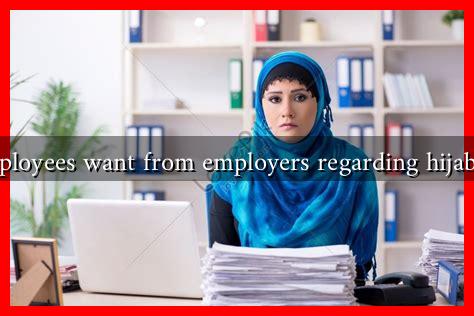-
Table of Contents
What Do Employees Want from Employers Regarding Hijab Acceptance?
The hijab, a traditional headscarf worn by many Muslim women, has become a focal point in discussions about workplace diversity and inclusion. As more organizations strive to create inclusive environments, understanding what employees want from their employers regarding hijab acceptance is crucial. This article explores the expectations of employees, the benefits of hijab acceptance in the workplace, and how organizations can foster a more inclusive atmosphere.
Understanding Employee Expectations
Employees who wear the hijab often seek a supportive and understanding work environment. Their expectations can be categorized into several key areas:
- Respect for Personal Beliefs: Employees want their religious beliefs to be acknowledged and respected. This includes understanding the significance of the hijab in their lives.
- Non-Discrimination Policies: Clear policies that prohibit discrimination based on religious attire are essential. Employees expect these policies to be enforced consistently.
- Supportive Work Culture: A culture that promotes diversity and inclusion can significantly impact employees’ comfort levels. Employees desire an environment where they can express their identity without fear of judgment.
- Training and Awareness: Employers should provide training for all staff to foster understanding and acceptance of different cultures and religions, including the significance of the hijab.
The Benefits of Hijab Acceptance in the Workplace
Accepting hijab-wearing employees can yield numerous benefits for organizations, including:
- Enhanced Employee Morale: When employees feel accepted and valued, their job satisfaction increases, leading to higher morale and productivity.
- Diverse Perspectives: A diverse workforce brings a variety of perspectives, which can enhance creativity and innovation within teams.
- Attracting Talent: Companies known for their inclusive practices are more likely to attract top talent from diverse backgrounds.
- Positive Brand Image: Organizations that embrace diversity and inclusion can enhance their reputation, appealing to a broader customer base.
Case Studies: Successful Hijab Acceptance in the Workplace
Several companies have successfully implemented policies and practices that support hijab acceptance:
- Accenture: This global consulting firm has made significant strides in promoting diversity. They have established clear policies against discrimination and provide training to employees on cultural sensitivity, which includes understanding the hijab.
- Starbucks: The coffee giant has been recognized for its inclusive policies, allowing employees to wear religious attire, including hijabs. This acceptance has contributed to a positive work environment and employee loyalty.
- IBM: IBM has long been a leader in diversity and inclusion. Their commitment to creating a welcoming environment for all employees, regardless of their religious attire, has set a standard in the tech industry.
Statistics on Hijab Acceptance
Research indicates that acceptance of hijab-wearing employees can significantly impact workplace dynamics:
- A study by the Pew Research Center found that 67% of Muslim women in the U.S. reported experiencing discrimination due to their hijab.
- According to a report by McKinsey & Company, companies with diverse workforces are 35% more likely to outperform their competitors.
How Employers Can Foster Hijab Acceptance
Employers can take several steps to create an inclusive environment for hijab-wearing employees:
- Implement Clear Policies: Establish and communicate non-discrimination policies that explicitly include religious attire.
- Provide Training: Offer diversity training that includes education on the significance of the hijab and other cultural practices.
- Encourage Open Dialogue: Create forums for employees to share their experiences and discuss diversity-related topics.
- Lead by Example: Leadership should model inclusive behavior and actively support diversity initiatives.
Conclusion
In conclusion, employees who wear the hijab seek respect, understanding, and a supportive work environment. Employers who embrace hijab acceptance not only foster a more inclusive culture but also reap the benefits of enhanced employee morale, diverse perspectives, and a positive brand image. By implementing clear policies, providing training, and encouraging open dialogue, organizations can create a workplace where all employees feel valued and accepted. As the workforce continues to diversify, understanding and addressing the needs of hijab-wearing employees will be essential for fostering a truly inclusive environment.
For further reading on workplace diversity and inclusion, you can visit DiversityInc.



